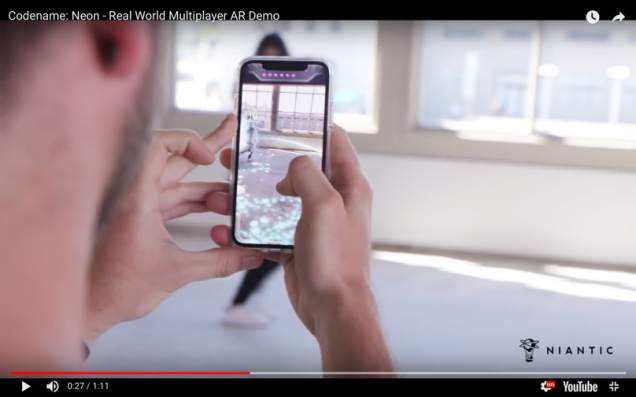Back to 1901, L. Frank Baum, author of The Wonderful Wizard of Oz, came up with the idea of “Character Marker” consisting of a pair of spectacles to mark people’s characters on their forehead in his novel The Master Key, which was regarded as the very first vision of Augmented Reality. Almost 80 years after the novel, the first Head-up Display device was invented by Steve Mann, the first version of Eyetap, which combined the scene in front of users and the computer-mediated imagery that projected onto the glasses (USA Today, 2001). As the technology developed during the following years, the term “Augmented Reality” was coined by a former Boeing researcher Thomas P. Caudell in 1990 (Lee, 2012).
Unlike the Virtual Reality which puts users into a virtual world and completely insulates them from the surrounding environment, the Augmented Reality is a visually-mediated reality, aiming to “both augment and mediate my surroundings” (Mann, 2012).
The Augmented Reality technology was employed by the U.S. Air Force in the first place with the development of Virtual Fixture by Louis Rosenberg in 1992 at the U.S. Air Force Armstrong Labs, which are “computer-generated percepts overlaid on top of the reflection of a remote workspace” to enhance human performance with better presence (Rosenberg, 1992).
However, as a relatively new concept and an emerging technology from last century, Augmented Reality has become prevalent in various domains because of its higher level of engagement and interaction than traditional forms of communication, to be it print press, broadcast or the two-dimension internet media.
Nowadays, the AR technology has been widely used beyond military areas into every aspect of people’s daily life, from video games and social media to telecasting, from navigation and tourism to education. AR games, such as Pokémon Go and Neon, encourage game players to interact with the surrounding environment and people instead of isolating the players from others, which may refresh people’s perception of traditional video games, reconstruct the video game industry and most importantly, facilitate the interaction and communication between people.

AR technology has been serving the television industry for a long time, especially in certain types of programs requiring complex visualization techniques such as weather casting. Moreover, the AR technology can change the stage settings of the broadcast by providing AR overlays, which is widely used in the television industry.
Similarly, auto and technology companies have devoted efforts to adding AR technology into the navigation system, either projecting the mediated imagery on the windscreen or using Head-up Display devices. This new application of AR technology in the auto industry will replace the current map apps installed in smartphones which can be distractive and risky while drivers shift their focus from the windscreen to the phone screen.

Apart from the on-going development of the AR technology in the areas mentioned above, people are getting increasingly ambitious about the ubiquity of AR. The term “Smartglass” has been brought up with the potential to replace smartphones. For example, employees could wear AR glasses to follow the real-time instruction and to locate any information they need about any items in the workplace instead of looking at the manual book for hours. Beyond the workplace, it is predicted that with people’s higher expectations and development of the technology, smartglasses will be more commonplace in our daily lives, playing a fundamental role as our personal assistant in the near future. Just like every other technology revolution, the AR technology is coming onto the stage to lead a revolution, connecting, influencing and even changing people in its own way.
Actually, the current stage of the online-social-mobile communication development has shown the sign of AR’s demand as these technologies are integrated with AR for better user experience. Various platforms such as Snapchat, Messenger and Instagram have added AR filters as one of the prominent features. Likewise, Apple has AR emoji in the new version of iPhone. Undoubtedly, Augmented Reality has become a new strategy for these technology companies to attract, engage and interact with more consumers.
Along with the ease and convenience of AR technology there comes concern about the privacy issue. Since AR technology still relies on cameras, and the cameras may be hacked or manipulated, people can intuitively find it hard to trust the technology. After all, it is common to see people cover the cameras on their devices nowadays. Another concern is that: is augmented reality is still the reality? Or it becomes a kind of deception?
Reference:
Lee, K. (2012). Augmented reality in education and training. TechTrends, 56(2), 13-21.
Mann, S. (2012). Eye am a camera: Surveillance and sousveillance in the glassage. Time Magazine, 2.
Rosenberg, L. B. (1992). The Use of Virtual Fixtures as Perceptual Overlays to Enhance Operator Performance in Remote Environments. Stanford Univ Ca Center for Design Research.
“The ultimate wearable computer”. USA Today. 25 June 2001. Retrieved 3 September 2009.